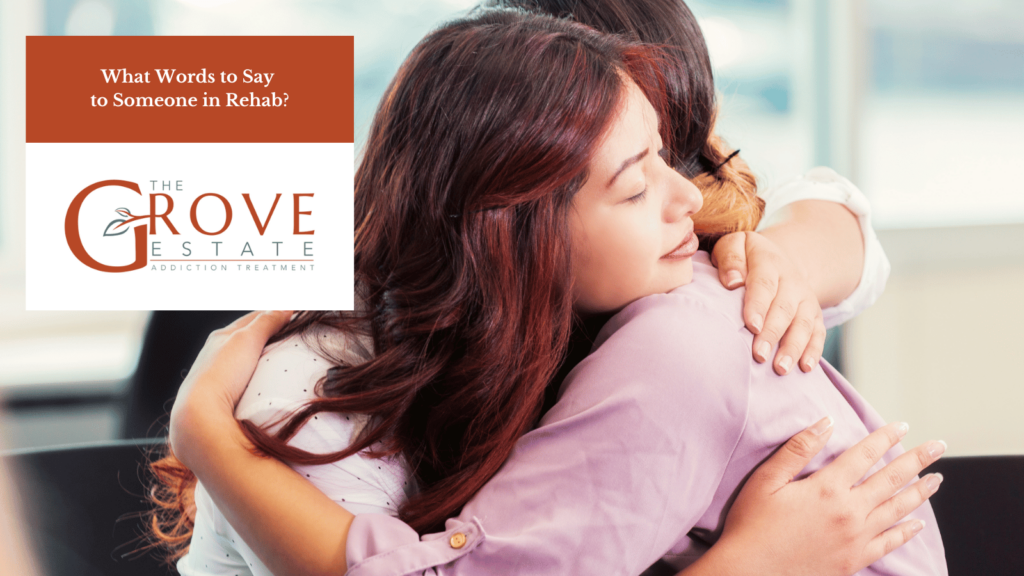Drug and alcohol addiction profoundly impacts millions worldwide, with the World Health Organization reporting 3 million alcohol-related deaths annually. In the United States, substance abuse costs exceed $600 billion yearly, covering healthcare, crime, and lost productivity, according to the National Institute on Drug Abuse.
Drug and Alcohol Rehabilitation programs are imperative, offering treatments that combine medical, psychological, and social support to help individuals overcome addiction and reclaim their lives. Rehab centers specialize in treating substance use disorders related to illicit drugs, prescription medications, or over-the-counter substances. According to a National Survey on Drug Use and Health in 2022, approximately 2.2 million adults in the United States who were diagnosed with Alcohol Use Disorder (AUD) received treatment, representing only 7.6% of those diagnosed with the condition. Thus indicating a significant treatment gap, as the vast majority of individuals with AUD did not receive the help they needed.
The effectiveness of rehab is enhanced through evidence-based approaches like behavioral therapies and medication-assisted treatment. As the understanding of addiction as a complex condition deepens, rehab services evolve to provide holistic, individualized care.

What to Expect from Drug & Alcohol Rehab?
Starting your rehab journey entails a comprehensive process that begins with detoxification, where the body is cleansed of substances, followed by structured therapy and counseling sessions. These interventions aim to treat the underlying causes of addiction, fostering personal growth and coping mechanisms.
Drug and Alcohol Rehab works by offering personalized treatment plans that may include a combination of behavioral therapy, group sessions, and medical support. The goal is to equip individuals with the tools needed for long-term recovery, focusing on healing both the mind and body.
Here is a list of what to expect from a Drug and Alcohol Rehab Program:
- Intake Evaluation: Comprehensive assessment of your addiction history, health status, and personal circumstances to tailor the treatment plan.
- Detoxification: Medically supervised withdrawal to safely remove substances from your body, managing withdrawal symptoms.
- Therapy Sessions: Individual, group, and possibly family therapy to address the psychological aspects of addiction.
- Educational Workshops: Learning about addiction, its effects, and strategies for maintaining sobriety.
- Skill Development: Training in coping mechanisms, stress management, and relapse prevention techniques.
- Peer Support: Interaction with others in recovery through group sessions or support meetings.
- Personal Reflection Time: Opportunities for meditation, journaling, or other reflective practices.
- Aftercare Planning: Developing a long-term strategy for sobriety, including follow-up appointments and support group participation.
- Physical Wellness Programs: Activities like exercise, yoga, or other forms of physical therapy to improve overall health.
- Medication Management: If needed, administration of medications to treat withdrawal symptoms or co-occurring mental health disorders.
How to Determine If Rehab is Necessary For Substance Use?
Identifying the need for a rehab involves acknowledging the signs of addiction. According to a comprehensive study by Volkow and Koob in 2015, published by the National Institute on Drug Abuse (NIDA), addiction is recognized as a chronic brain disease marked by compulsive drug seeking and use despite harmful consequences. Knowing what symptoms to look for is necessary in order to determine if treatment is needed and a comprehensive evaluation will help determine the severity of the addiction.
How is Alcohol Addiction Diagnosed?
Alcohol Use Disorder is diagnosed by using the DSM-5 criteria. This involves assessing patterns of alcohol consumption that lead to significant impairment or distress in an individual’s life. Here is the list of criteria:
- Taking the substance in larger amounts or for longer than intended.
- Persistent desire or unsuccessful efforts to cut down or control substance use.
- Spending a great deal of time obtaining, using, or recovering from the substance.
- Craving or strong desire to use the substance.
- Recurrent substance use leading to failure to fulfill major role obligations.
- Continued use despite recurrent social or interpersonal problems.
- Tolerance.
- Withdrawal symptoms.
The severity of AUD is determined based on the number of criteria met: mild (2-3 symptoms), moderate (4-5 symptoms), and severe (6 or more symptoms). This structured approach helps healthcare providers identify the extent of the disorder and tailor appropriate treatment plans.
It’s time to seek help when substance use becomes a central part of life, overshadowing all other activities and responsibilities. If efforts to reduce or stop usage fail repeatedly, or if substance use leads to dangerous behavior, legal issues, or strains on personal and professional relationships, it’s crucial to consider rehab. Rehabilitation centers offer structured support and treatment to navigate the recovery process and work towards a healthier, substance-free life.

What are the Different Types of Rehab Centers?
Rehabilitation centers vary in focus and the specifics of the treatments they offer, tailored to address different types of addictions and patient needs. Here is a list of the different types of rehab centers for addiction:
- Drug Rehab Centers: Specialized in treating addictions to illicit drugs and prescription medications. These centers offer detoxification, individual and group therapy, and often support for dual diagnoses.
- Alcohol Rehab Centers: Focus specifically on alcohol addiction, starting with detox to manage withdrawal symptoms safely, followed by various therapeutic interventions to tackle the psychological factors of dependence.
- Behavioral Rehab Centers: Aimed at treating behaviors such as gambling, sex addiction, or eating disorders, employing a combination of psychotherapy and behavioral modifications.
- Luxury Rehab Centers: Provide high-end amenities and more privacy, along with comprehensive substance abuse and behavioral disorder treatments.
- Hospital-Based Rehab: These facilities offer medical detox and are capable of treating severe cases of addiction along with other co-existing health issues, often in a hospital setting.
- Inpatient Rehab Centers: Patients reside within the facility for a duration, usually 30-90 days, receiving intensive care and structured treatment programs.
- Outpatient Rehab Centers: Allow patients to maintain their daily life to a degree, requiring them to attend treatment sessions several times a week at the facility.
What is the Process of Detoxification?
Detoxification is the first critical step in the rehab process, where the body is cleared of substances, leading to withdrawal. The severity and duration of withdrawal symptoms vary based on the substance used, duration of use, and individual health. Common symptoms include:
- Anxiety
- Insomnia
- Nausea
- Mood swings
- Physical discomfort
- Seizures
- Delirium tremens
To manage these symptoms and ensure safety, medical professionals may use medications and interventions during detox. The detox process often includes supportive care, such as hydration, nutrition, and monitoring of vital signs to stabilize the individual’s physical condition, setting the stage for comprehensive addiction treatment.
What Are the Different Types Of Therapy for Treating Addiction?
Treatment for addiction employs a diverse array of therapies, including cognitive-behavioral therapy, medication-assisted treatment, and holistic approaches, tailored to address the physical, psychological, and social aspects of substance use disorders, significantly enhancing treatment success and reducing relapse risks.
Medication Therapy
Medication therapy for addiction aims to reduce cravings and withdrawal symptoms with medications like Buprenorphine, Methadone, and Naltrexone for opioids, Disulfiram for alcohol, and nicotine replacement therapies, tailored to individual needs and often combined with counseling to support long-term recovery and prevent relapse.
What is Buprenorphine?
Buprenorphine is a medication approved by the FDA to treat opioid addiction. It works as a partial opioid agonist, which means it can activate opioid receptors in the brain but produces a much milder response than full agonists like heroin or methadone. Buprenorphine helps reduce cravings and withdrawal symptoms in individuals addicted to opioids, making it easier to adhere to treatment and avoid relapse.
What is Methadone?
Methadone is a long-acting opioid agonist medication, used to treat opioid addiction and sometimes for chronic pain management. In addiction treatment, methadone reduces craving and withdrawal symptoms without producing the high associated with the drug of addiction. It helps stabilize patients and allows them to rebuild their lives. Methadone treatment is highly regulated and is administered daily under supervision at specialized clinics.
What is Disulfiram(Antabuse)?
Disulfiram is one of the oldest medications used to treat alcohol addiction. When someone on disulfiram consumes alcohol, the drug blocks the enzyme that breaks down acetaldehyde (a by-product of alcohol metabolism), causing unpleasant symptoms like nausea, flushing, and palpitations, which deter drinking. According to a study conducted by Skinner et al. (2014) published in the Journal of Substance Abuse Treatment, Disulfiram has been found to reduce alcohol consumption by approximately 13%.
What is Naltrexone?
Naltrexone is a medication used primarily in the management of alcohol dependence and opioid addiction. It blocks the euphoric effects of opioids and the pleasurable effects of alcohol when consumed. According to an article written by Dharminder Singh and Abdolreza Saadabadi published by the NIH in 2023, Naltrexone (and its active metabolite 6-beta-naltrexone) is pharmacologically effective against alcohol and opioids by blocking the mu-opioid receptor. Researchers are studying its use in patients with stimulant use disorder, particularly patients with poly-drug dependence on opioids, heroin, and amphetamine. The drug is part of the current best practices for addressing and treating patients with opioid use disorder. Naltrexone is available in a pill form or as a monthly injectable known as Vivitrol. It is non-addictive and does not produce physical dependence.
What is Nicotine Replacement Therapy?
Nicotine Replacement Therapy helps individuals quit smoking by providing nicotine in forms other than cigarettes, such as patches, gum, lozenges, inhalers, or nasal sprays. This therapy helps reduce withdrawal symptoms and smoking urges by delivering smaller and more controlled doses of nicotine without the harmful chemicals found in cigarettes.
Behavioral Therapies
Behavioral therapies for addiction, including Cognitive Behavioral Therapy (CBT), Motivational Interviewing (MI), Dialectical Behavior Therapy (DBT), and Family Therapy, focus on changing negative thought patterns, enhancing motivation, managing emotions, and improving family dynamics to develop coping strategies, improve problem-solving, and create a supportive environment, significantly increasing treatment success and reducing relapse risk.
What is Cognitive Behavioral Therapy (CBT)?
Cognitive Behavioral Therapy is used to identify and change negative thought patterns and behaviors. According to Hofmann and colleagues in a comprehensive review published by the NIH in 2012, Cognitive Behavioral Therapy (CBT) is effective in treating a variety of mental health conditions including anxiety, depression, and substance abuse. CBT operates on the principle that negative thought patterns and behaviors can be changed, which in turn can affect emotions positively, thus improving the individual’s overall quality of life.
What is Motivational Interviewing (MI)?
Motivational Interviewing is designed to enhance an individual’s motivation towards positive behavioral change. It is particularly effective in addiction treatment settings, as noted by various studies, which emphasize its role in addressing substance use by fostering internal motivation to change those behaviors. Motivational Interviewing involves techniques such as reflective listening, exploring ambivalence, and emphasizing personal autonomy and choice.
What is Dialectical Behavior Therapy (DBT)?
Dialectical Behavior Therapy, originally developed for borderline personality disorder, has proven effective for a broader range of issues with dual-diagnosis including addiction, eating disorders and depression. According to a study by BioPsychoSocial Medicine in 2021, DBT helps manage negative emotions and reduces interpersonal conflicts through skill-building in mindfulness, emotional regulation, and distress tolerance.
What is Family Therapy?
Family therapy addresses dysfunctional dynamics within families, which significantly impacts the mental health of all members. According to a study summarized in “Advances in Psychiatric Treatment” by Carr in 2000, family therapy has proven effective in addressing a variety of conditions, such as adolescent anorexia nervosa, behavioral issues, and substance abuse in adolescents and adults. The evidence includes randomized controlled trials and meta-analyses, which demonstrate significant long-term benefits of family therapy, particularly when combined with other treatment modalities.

How to Choose Between Inpatient and Outpatient Rehab?
Choosing between inpatient and outpatient rehab is a decision that hinges on the individual’s specific needs, the severity of their addiction, and their personal circumstances. Understanding the differences between these two options, including the level of support, the intensity of treatment, and the impact on daily life, is essential in making an informed choice that aligns with one’s recovery goals.
What are the Benefits of Inpatient Rehab?
- Intensive Care: Provides 24/7 medical and therapeutic support, ideal for severe addiction cases.
- Structured Environment: Minimizes distractions and triggers, facilitating focus on recovery.
- Comprehensive Services: Offers a range of therapies, including individual, group, and family counseling.
- Peer Support: Enables interaction with others facing similar challenges, fostering a supportive community.
What are the Advantages of Outpatient Services?
- Flexibility: Allows individuals to continue work or education while receiving treatment.
- Cost-Effective: Less expensive than inpatient rehab due to the non-residential nature.
- Family Involvement: Enables closer support from loved ones during the recovery process.
- Real-World Practice: Provides opportunities to apply coping strategies in everyday settings.
How Long Does Drug and Alcohol Rehab Take?
The duration of drug and alcohol rehab is highly variable, influenced by individual needs, addiction severity, and program type. It ranges from short-term programs (30 days) to long-term stays (90 days or more).
Deciding the appropriate length of stay involves evaluating the progress in treatment and readiness for transition to less intensive care. Factors such as personal history, the substances used, and treatment response also play a crucial role in determining how long rehab might last. It is also important to note, that rehabilitation is a life-long process and requires individuals to continue to work on their sobriety for the rest of their lives.
What are the Costs of Rehab Treatment?
The cost of drug and alcohol rehab varies widely based on several factors, including the type of program, location, amenities offered, duration of treatment, and level of care required. According to a report by the Substance Abuse and Mental Health Services Administration (SAMHSA), the average cost of a 30-day inpatient rehab program ranges from $2,000 to $25,000, while a 90-day program can cost between $6,000 and $80,000.
Rehab costs are be influenced by the level of medical and therapeutic services provided, such as detoxification, counseling, medication management, and aftercare planning. Luxury or executive rehab facilities with upscale accommodations and additional services may have higher price tags, often exceeding $20,000 per month.
There are rehab loans designed to help individuals finance the cost of addiction treatment. These loans can be obtained through financial institutions, with terms and conditions varying based on credit history and lender policies. They allow patients to pay for rehab upfront and repay the loan over time, making treatment more accessible for those without immediate funds.
What is the Role of Assessments in Addiction Treatment?
Professional assessments are fundamental to effective addiction treatment, serving as the cornerstone for understanding the intricacies of an individual’s substance use and overall mental health. These assessments are comprehensive, encompassing evaluations of the person’s substance use history, mental health status, and the presence of any co-occurring disorders. This thorough evaluation process is crucial for determining the severity of the addiction and the appropriate level of care required.
The assessment process includes several key components:
- Interviews and Questionnaires: These tools gather detailed information about the individual’s substance use history, personal background, and health.
- Physical Health Examinations: These assess the physical impact of addiction and identify any related health issues.
- Psychological Screenings: These help to diagnose any mental health conditions that may be present alongside the addiction.
- Social and Environmental Assessments: These evaluate the influence of social interactions and environmental factors on the individual’s addiction.
There are 5 different types of assessments that are used to determine which treatment will be beneficial for each individual including ASI, SASSI, MMPI, BDI and the DSM-5.
What is the Addiction Severity Index (ASI)?
The ASI is a detailed clinical interview designed to evaluate multiple aspects of substance abuse across seven areas: medical status, employment and support, drug use, alcohol use, legal status, family/social relationships, and psychiatric status. It helps clinicians understand the varied impacts of substance use on an individual’s life.
What is the Substance Abuse Subtle Screening Inventory (SASSI)?
The SASSI is a brief self-administered screening tool intended to identify individuals who are likely to have a substance dependence disorder. It includes subtle items specifically crafted to uncover substance misuse in individuals who may deny or minimize their issues.
What is the Minnesota Multiphasic Personality Inventory (MMPI)?
The MMPI is a comprehensive psychological assessment tool used to screen for a variety of psychological conditions, including personality disorders and mental health issues that often accompany substance abuse disorders.
What is the Beck Depression Inventory (BDI)?
The BDI is a 21-question tool that measures the intensity of depression in individuals. It evaluates various symptoms of depression such as sadness, pessimism, feelings of failure, and lack of satisfaction, to provide a severity score.
What is the Diagnostic and Statistical Manual of Mental Disorders, Fifth Edition (DSM-5)?
The DSM-5 is the primary manual used by healthcare professionals in the U.S. to diagnose mental disorders. It includes comprehensive criteria for diagnosing a wide range of conditions, including substance use disorders, and is essential for effective treatment planning.
These tools help clinicians gain a comprehensive understanding of the individual’s needs and the factors influencing their addiction, guiding the creation of an effective treatment plan.
What is Aftercare?
Aftercare helps to reinforce the coping strategies and healthy habits developed during treatment, reducing the risk of relapse. Aftercare offers a safety net through continued therapy, support groups, and monitoring, helping individuals to navigate the challenges of reintegration into daily life while maintaining sobriety.
Programs like Alcoholics Anonymous and Narcotics Anonymous are highly effective at helping prevent relapse. A significant meta-analysis by Kelly, Humphreys, and Ferri published in the Cochrane Database of Systematic Reviews provides a comprehensive evaluation of AA and similar Twelve-Step Facilitation (TSF) programs. Their analysis, updated in 2020, suggests that these programs are associated with higher rates of continuous abstinence over months and years compared to other treatments.
What Is Vocational Rehabilitation?
Vocational rehabilitation is a subset of aftercare focused on helping individuals regain the skills and confidence to return to the workforce. This service includes career counseling, job training, resume building, and job placement assistance. Vocational rehabilitation aims to empower those in recovery to achieve financial independence and fulfillment, contributing to their overall well-being and reducing the likelihood of relapse.
How to Find a Rehab Center Near You?
To find a drug and alcohol rehab center nearby, start with an online search for local facilities, or use directories and hotlines specializing in addiction services. Healthcare providers, mental health professionals, and insurance companies can also offer referrals. Additionally, many addiction organizations and support groups provide resources and recommendations for reputable rehab centers in your area.

What to Consider When Choosing a Rehab?
When selecting a rehab center, consider factors such as:
- Type of Programs Offered: Ensure the facility provides the specific type of treatment you need, such as inpatient, outpatient, or detox services.
- Treatment Approaches: Look for centers that offer evidence-based practices tailored to your needs.
- Staff Qualifications: Check the credentials and experience of the medical and therapeutic staff.
- Location: Decide whether you prefer a center close to home for family involvement or one further away to disconnect from triggers.
- Cost and Insurance: Confirm the cost of treatment and what is covered by your insurance or available payment plans.
- Facility Accreditation: Ensure the center is accredited by a recognized body, which indicates adherence to quality and safety standards.
- Aftercare Support: Choose a center that offers a robust aftercare program to support long-term recovery.
Community Resources
Community resources for recovery are varied and include outpatient treatment programs, mental health services, sober living houses, and vocational rehabilitation. Accessing these resources often starts with a referral from a rehab center, healthcare provider, or through local health departments and community centers. Engaging with these resources significantly enhances the recovery experience, offering additional support and services tailored to individual needs in the post-rehab phase.
How to Start Your Recovery Journey?
When preparing for rehab, bring items that will provide comfort and support during your stay. Essentials include clothing, personal hygiene products, identification, insurance information, and any prescribed medications. It’s also recommended to bring personal items that aid relaxation or coping, such as books, journals, or music. Avoid bringing items prohibited by the facility, such as non-prescribed drugs, alcohol, or items that can distract from the recovery process. Check with the rehab center for a specific list of what to bring and what to leave at home.
Going to rehab while employed involves legal and personal considerations. Firstly, understand your rights under laws like the Americans with Disabilities Act (ADA) and the Family and Medical Leave Act (FMLA), which may protect your job and offer the right to medical leave for treatment. Communicate with your employer honestly about your need for treatment, focusing on your commitment to improving your health and job performance.
Many employers have policies or Employee Assistance Programs (EAPs) that support staff in seeking treatment. Planning and open communication can help manage your professional responsibilities while prioritizing your health and recovery. Those contemplating how to manage work and rehabilitation should consider additional resources and strategies, and can find helpful guidance on rehab when you have a job.
What is a Typical Day in Drug Rehab Like?
Rehabilitation centers are designed to provide a comprehensive and structured environment that supports the recovery process. Here is a breakdown of a typical day in a rehab center, highlighting the balanced mix of activities:
- Morning Routine:
- Healthy Breakfast: Starting the day with a nutritious meal to promote physical well-being.
- Group Session/Meeting: Engaging in a therapy session or an educational workshop that focuses on addiction and recovery.
- Afternoon Activities:
- Individual Counseling: One-on-one sessions with a counselor to discuss personal issues and progress.
- Specialized Therapy: Participation in therapies tailored to individual needs, such as cognitive-behavioral therapy or art therapy.
- Physical Activities or Relaxation: Time allocated for exercise or relaxation practices to improve physical and mental health.
- Evening Schedule:
- Support Group Meetings: Attending meetings like AA or NA to foster peer support and shared experiences.
- Personal Reflection or Journaling: Allocating time for self-reflection to internalize daily learnings and emotions.
- Preparation for the Next Day: Planning and preparing for the upcoming day’s activities.

What Words to Say to Someone in Rehab?
Communicating effectively with a loved one in rehab involves expressing support, understanding, and encouragement. Phrases like “I’m proud of you for seeking help,” “I believe in your ability to recover,” and “You’re not alone in this journey” can provide immense comfort and motivation. For additional guidance on words to say in rehab, consider the importance to listen actively, offer non-judgmental support, and acknowledge the challenges they are facing. Avoid language that could be perceived as blaming or shaming. Instead, focus on positive reinforcement and expressing confidence in their recovery process.
What are the 12 guiding principles of recovery?
The principles include hope, person-driven focus, many pathways, holistic approach, peer support, relational basis, culture, addressing trauma, leveraging strengths and responsibilities, respect, and community.
What are the basic steps in rehabilitation?
The steps involve assessment, detoxification, therapeutic interventions (like individual, group, and family therapy), skill-building, aftercare planning, and ongoing support.
What are the five elements of recovery?
The elements are health (overcoming or managing one’s disease(s) or symptoms), home (a stable place to live), purpose (meaningful daily activities), community (relationships and social networks), and coping strategies.
What are the 4 R’s of rehabilitation?
They are Restoration of function, Reintegration into society, Recovery of well-being, and Reduction of disability.
What are the four stages of recovery?
The stages are pre-contemplation, contemplation, action, and maintenance.
Is rehabilitation the same as therapy?
Rehabilitation is a broad process that may include therapy as one of its components. Therapy typically refers to specific psychological treatments, while rehab encompasses a wider range of services aimed at recovery from addiction or illness.

Share This Post



